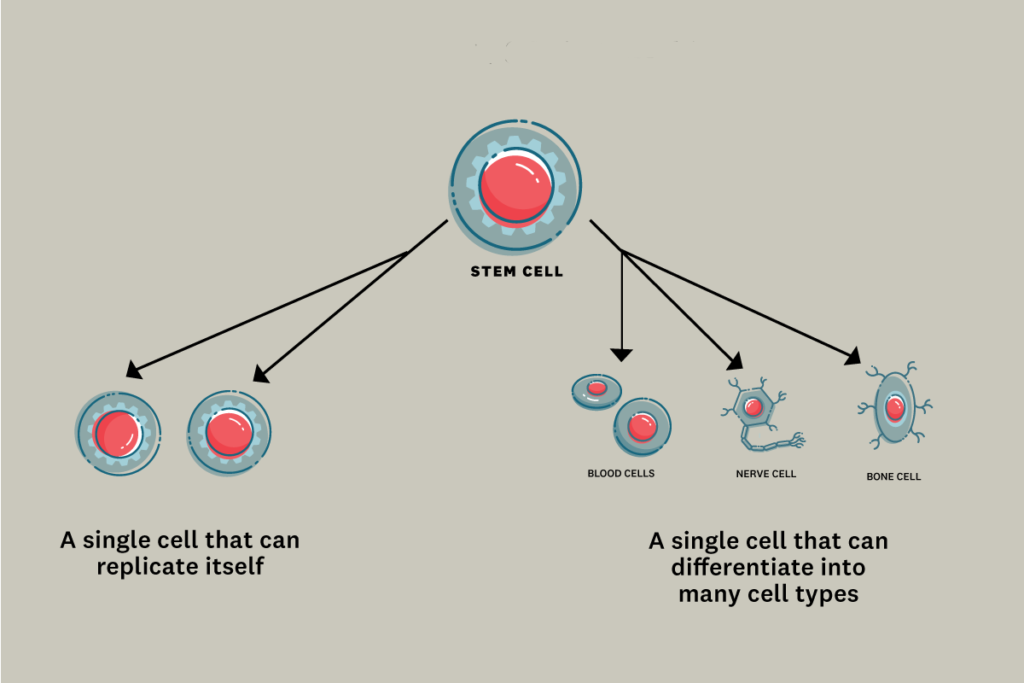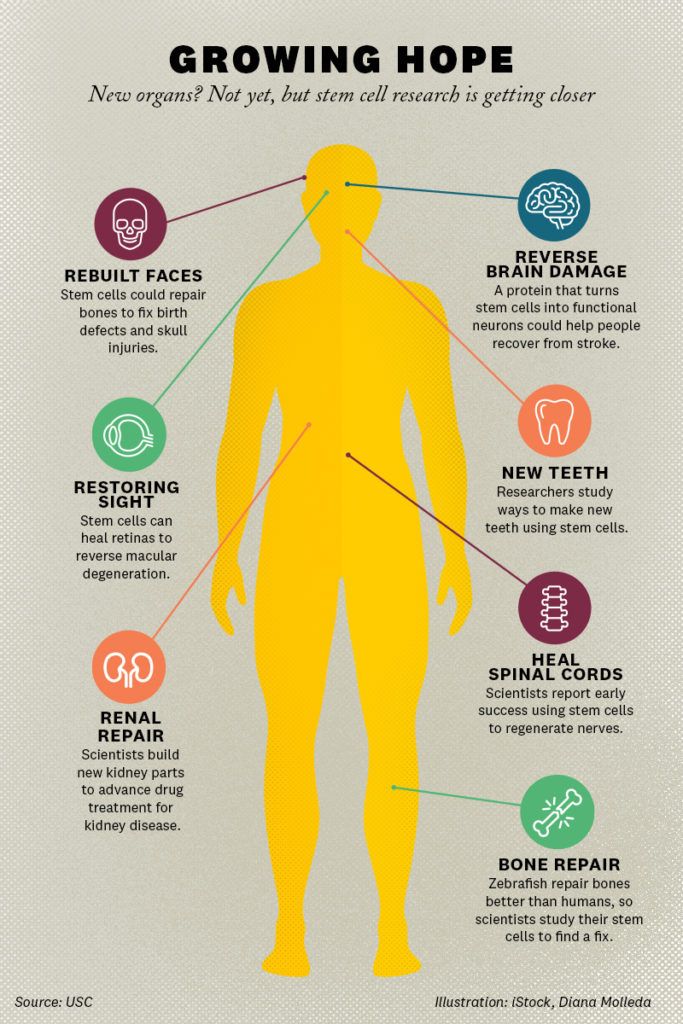What is a stem cell?
A stem cell has two important properties: it is self-renewing and can multiply to produce more stem cells; and it is unspecialized and can differentiate into many specialized cell types. Our body contains multiple types of stem cells, each committed to the maintenance and repair of a specific type of tissue—blood, skin, muscle, etc. Importantly, an absence of stem cells in some key organs, including the heart and kidney, correlates with a limited repair capability.

In 2006, scientist Shinya Yamanaka discovered that differentiated cells obtained from adult tissues (skin, blood, etc.) can be reprogrammed to a state very similar to stem cells in the early embryo. These induced pluripotent stem cells or iPSCs share with embryo stem cells the power to generate any cell type of the adult body, given the appropriate set of conditions. iPSCs from patients can be used to create specific disease models and enable screening for potential therapeutic drugs. iPSCs can also serve as a source for off-the-shelf or personalized stem cell therapies.
What is regenerative medicine?
Regenerative medicine is the therapeutic application of stem cells, and an understanding of how our bodies are built, maintained and repaired, to treat disease and disorders. Regenerative approaches may apply cell-based treatments directly in a patient, or use gene therapies to correct genetic disorders affecting normal tissue functions. In addition, stem cell-directed disease modeling provides new insights for therapy development and a platform to screen for disease-fighting drugs.
